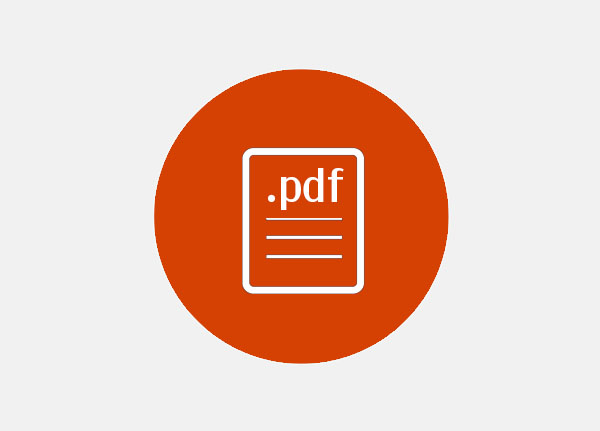This is a Marathon, Not A Sprint (Part One)
Strategies to Address Wear & Tear
This is a Marathon, Not A Sprint (Part One)
As professionals in essential services, we all need to consider strategies that will help us stay well long-term rather than racing to just get through another day.
What can we do to remain clear-headed and balanced during this pandemic?
Launched into Crisis: The Dangers of Wear & Tear on Helping Professionals
I am sure that many of you remember the scene in the movie Apollo 13 where the crew is urgently trying to find a way to perform a lifesaving repair on their spacecraft’s air supply. A NASA engineer throws a box of assorted items on a table and says to his colleagues:
“OK people, listen up […] we gotta find a way to make this, fit into the hole for this, using nothing but that.”
The team could only use materials that the stranded astronauts would have access to on their ship. These engineers needed to think fast and creatively – with the eyes of the entire world watching them. Failure to resolve this problem meant certain catastrophe for the crew.
High stakes, lots of pressure, intricate problems and few resources – during this COVID-19 pandemic, many of us feel like those NASA folks and the key challenge is this:
How do we access creative problem solving when we are stressed and exhausted? How do we retain the ability to think clearly when the reality is that many of us were launched into this crisis already tired and depleted?
The Impact of Wear and Tear: A Cautionary Tale
When experts discuss burnout, compassion fatigue and moral distress, they often overlook a crucial contributing factor to provider impairment – plain old fatigue.
In her explosive book Five Days at Memorial: Life and Death at a Storm-Ravaged Hospital, Pulitzer-prize winning journalist Sheri Fink investigates what took place in a New Orleans health care facility in the aftermath of Hurricane Katrina in August 2005.
For several days, the hospital lost power as well as much of its contact with the outside world. Exhausted staff, all of whom were now taking refuge in the sweltering facility, were desperately trying to care for patients – often working with very little sleep, a lack of food, and no sanitation, air conditioning or electricity.
Leadership quickly eroded. Medical professionals who were stuck in the hospital had to contend with a lack of communication about evacuation plans and no hope of respite to come. There were no more established shift schedules, handover, or time for rest.
In her book, Fink shares numerous interviews with staff where they describe overwhelming moral distress, feelings of burnout, and anger towards senior leadership and the government. It is widely agreed that these factors contributed to serious lapses in judgment by some of those health care workers which led to some questionable ethical decisions in the end.
Our organizations experience significant challenges at the best of times and there are many cautionary tales such as those in Five Days at Memorial that describe the dangers of pushing employees past their level of healthy functioning. In the face of this COVID-19 pandemic, we have additional work pressure including supply and equipment shortages; fear of contagion for patients, for ourselves, and our families; difficult ethical decisions; and significant moral conflict.
Five Days at Memorial demonstrates the potentially catastrophic consequences of wear and tear in crisis situations as well as the deterioration of problem-solving skills that can occur when we do not have time to refuel and reset.
First, Secure the Foundations: Physical & Mental Hygiene
Dr. Patricia Fisher, clinical psychologist and senior advisor at TEND, is an expert in organizational stress and burnout in health care and other human service organizations. Dr. Fisher has long expressed concerns about the potentially disastrous impact of ignoring the basics of human physiology of helping professionals and their leadership.
As she explains in her book Resilience, Balance and Meaning:
“We are pretty good at dealing with spikes in stress levels as long as we get back to a relaxed state. Unfortunately, many people are consistently living with higher levels of chronic stress and their bodies are simply unable to experience any respite from the pressure. This has consequences.”
Physical and mental health are often the first things that are sacrificed in crisis situations. As we know, in order to maintain our ability to think clearly and to do our work well, we all need to:
- Get enough sleep
- Have a realistic shift schedule
- Eat quality food at regular intervals (including complex carbohydrates, healthy fats, greens and healthy protein sources)
- Maintain regular physical exercise (helps to reduce anxiety and boost immunity)
- Monitor caffeine intake (improve sleep and reduce anxiety)
- Monitor mood-altering drug intake (such as alcohol)
- Stay connected with loved ones and colleagues
- Limit media exposure to once or twice a day, only checking trusted sources
- Access emotional support (debrief and create a space to respectfully share)
- Access support to juggle family demands and/or caregiver roles while working front-line
Although these suggestions seem simple, we need to be mindful about checking-in with ourselves and monitoring our physical and mental health. For leaders, check-in with your staff to ensure that they have what they need – and don’t forget that your own self-care is important too.
Communication – Keep it Clear & Consistent
We are all currently receiving a large volume of rapidly evolving and sometimes contradictory information about COVID-19. As teams, it can be difficult, time consuming and confusing to have to wade through the deluge of information.
What can be done?
- Establish a communication protocol: Develop a concise, clear and consistent method for communicating important information among teams. Take time to ensure that your communication methods are ones that staff regularly consult. For example, sending emails may not be the best for your team if staff rarely have access to that technology. You may also consider the generational and personal preferences for communication methods.
- Provide regular updates: Each day, appoint a time to provide your team with necessary updates. Avoid too often (emails every hour) or too infrequent (once a week).
- Debunk rumours: Nominate one person to fact-check information and then have them report back to the team. Encourage staff to send their questions to this fact-checker and encourage everyone to avoid sharing information prior to this vetting system. This can be a useful system for curbing rumors and avoiding miscommunication.
- Be honest: If you are a leader and you don’t know something, tell your staff the truth – but also commit to finding out when you can. This is true for information about infection control, access to crucial supplies and referral resources, workload, layoffs and many other crucial factors that can impact the entire team physically and psychologically.
Ensuring that we maintain clear communication is a crucial component of keeping our teams cohesive and functioning well.
Reset & Listen to Your Body
The amount of stress we experience during times of crisis depends on many factors including past experiences, personality factors, current life stressors, coping strategies, prior training, personal resilience, and many others.
Regardless of the level of stress that we experience, it is important that we reset ourselves into a “rest and digest” state rather than some form of fight, flight, or freeze state as quickly as possible after a period of increased stress.
If we pay attention to our body at these times, it will give us clues as to what needs to happen next in order for us to reset ourselves. Often our body knows what to do – for example, bodies often tremble following a crisis event.
Things like crying and trembling are activities of the parasympathetic nervous system that the body uses to reset itself. It is best to allow the body to run through its course rather than forcing yourself to stop.
Activities of the nervous system that allow the body to metabolize stress hormones include:
- Trembling or shaking it off
- Crying
- Laughing
- Singing or chanting
- Moving our body in some way and getting our heart rate up (e.g. jumping jacks, running, climbing stairs)
- Relaxation activity (e.g., meditation)
- Connecting with a significant other or a beloved pet




